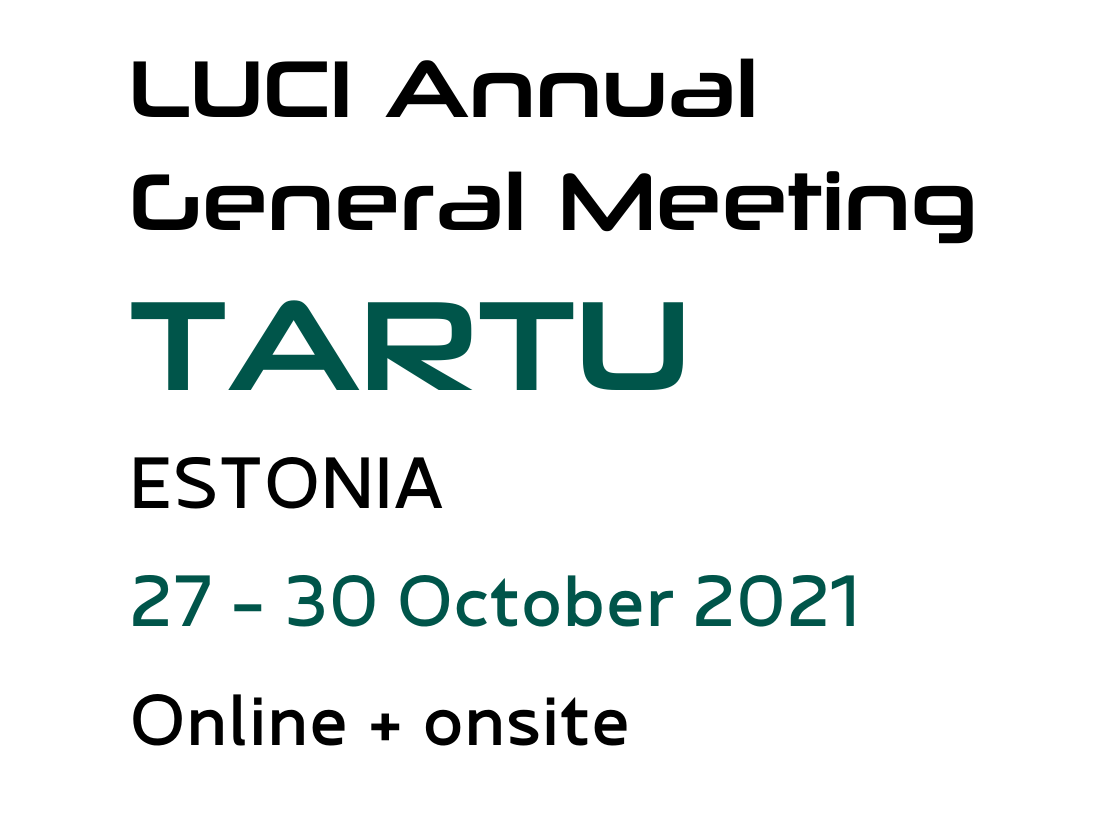Open Conference Sessions
The LUCI Open Conference Sessions give LUCI members the opportunity to showcase their city’s lighting strategy, projects and other initiatives, or discuss a topic of their choice, in a unique international forum. Organised in parallel tracks, each presentation session will last approximately 15 minutes with a live Q&A at the end of three sessions.
Thursday 28th October – Track 1
Lighting for today – planning for a smarter future
Ársæll Jóhannsson, Project Manager, Department of Environment and Planning, City of Reykjavík
The City of Reykjavik is well on its way towards upgrading the city’s public lighting into a LED smart city lighting grid. In total, the city aims to upgrade all of its 26 000 luminaires to LED by the year 2024. In the Breiðholt neighbourhood, the renewal process is near completion with 3500 luminaires having been upgraded to LED. The process follows Reykjavik City’s ambitious. Lighting Strategy, equipped with Zhaga receptacles for future connection to smart city solutions. Another important aspect of the renewal is to give new life to streets, parks, and squares. The Mjódd square in Breiðholt is a good example of a “forgotten” square which has been given new life with renewed public lighting, light art, and outdoor furniture.
The whispering lights of Old Town Tallinn
Eva Tallo, City Lighting Chief Specialist, City of Tallinn
The City of Tallinn recently renewed the lighting of the historic walls and towers of Tallinn’s Old Town. This presentation will be an overview of the international idea competition for the Old Town. City wall and towers lighting solution, as well as Tallinn City Lighting.
Nocturnal orthophotography of Lyon
Frédéric Durand, Project Manager, City of Lyon
The City of Lyon completed a nocturnal orthophotography to identify the sources of light pollution in the city. By understanding where the light pollution is coming from, the city hopes to find ways to decrease this human impact on biodiversity. The analysis of this orthophotography could confirm whether the new lighting plan of the City of Lyon can improve the situation. The results will also be used to adapt the lighting strategy and
will be integrated into the new lighting plan.
Thrusday 28th October – Track 2
Public Lighting Design Criteria: A Comprehensive methodology that positively impacts the social and environmental conditions of the City of Medellín
Jeronimo Rios Sanchez, Business Professional Operator, Empresas Públicas de Medellín (EPM)
Since 2011, EPM has been creating a methodology for lighting design and modernisation to LED technology, using design tools for lighting calculations, graphic information platforms (GIS), technical diagnostic visits and interaction with the community to analyse their needs. All of this is based on the technical regulations established for Colombia and the lighting design recommendations proposed in the Lighting Master Plan for the City of Medellín, which present a comprehensive look at the social, environmental, technical and spatial aspects. The presentation will showcase how the city manages to increase the positive impacts on a social and environmental level and, through smart lighting, efficiently improve the maintenance of the city’s lighting system.
Report on obtrusive light in Helsinki
Pia Rantanen, Urban Design Manager, City of Helsinki
The City of Helsinki will present its recently published report on obtrusive light which identifies the sources of obtrusive light in the urban environment and maps ways to reduce obtrusive light in the future. It is the result of a two-year survey realised through co-design with inhabitants, organisations and specialists. The report classifies different types of obtrusive light and proposes solutions for the light sources according to the party controlling the lighting in question. It presents area categories according to the lighting standards for the different types of areas in the city, and sets limit values determining the maximum amount of light directed to the sky and windows. By observing the values of the area categories, obtrusive light can be eliminated to a great extent.
Real-time smart lighting to ensure safety for citizens and protection of the environment
Luc Joosens, Chief Product & Marketing Officer, Schréder
Many cities have implemented smart lighting systems that dim during the night to reduce energy consumption
and the environmental impact. Today, the technology exists to go further. The City of Brussels tested an innovative smart lighting system along Bois de la Cambre, a busy artery running through a park, by using realtime weather and traffic data collected from the internet instead of a predefined schedule. This system calculates the optimal lighting level of each luminaire and automatically reduces the lighting level according to traffic density and weather conditions. This innovative system demonstrated that the city, without installing any additional hardware on the existing infrastructure, could generate additional energy savings compared to traditional dimming, while ensuring an optimal level of comfort and safety, and further reducing light pollution to preserve the environment.
Friday 29 October – Track 1
The biology behind light and health
Debra Skene, PhD, Surrey Distinguished Professor and Section Lead for Chronobiology at the University of Surrey, UK
Eyes are not only for image-forming vision. Evidence from animal and human studies have demonstrated the existence of a novel non-rod, non-cone ocular photoreceptor mediating the biological effects of light. These intrinsically photosensitive, melanopsin-expressing, retinal cells show enhanced short-wavelength blue-light sensitivity and drive multiple biological effects of light. To better establish the relationship between lighting and health, devices monitoring a person’s daily light exposure and sleep/wake, together with continuously tracking the indoor/
outdoor environments are needed.
Obtrusive light for colourful and dynamic lighting
Steve Lau, Vice President, YD Illumination
This presentation will provide updates on the CIE Technical Committee TC4-58 and share its latest results. The TC now consists of over 20 leading experts from more than 15 countries working on determining the effects of ALAN (Artificial Lights at night) on Natural Environments, residents, drivers, and astronomical observations. The proposed technical report TC4-58 will cover colourful and dynamic lighting as a source of obtrusive light. This report could then be used by lighting designers, lighting authorities from local governments, and engineering companies so that overall lighting effects do not generate obtrusive light and the lighting effect is acceptable.
Light art gallery under the open sky of the capital
Andrius Deimantas, CEO, Vilnius Lighting, City of Vilnius
As a new member of LUCI, the City of Vilnius will introduce itself and present its light-related projects in the city, including its light festival, Christmas tree lighting, and city lighting management. Vilnius has been organizing a light festival since 2019 to commemorate the city’s birthday. The festival highlights not only spectacular light art installations, but also the rich architectural heritage of Vilnius. It is free and accessible to all, attracting locals as well as an international audience. Each year, Vilnius also receives a lot of attention from the world for its astonishing Christmas trees and the little Christmas town. Innovative software systems are used to control the management of city lighting and the city has ambitious plans to come up with even more ingenious ways to light up the city.
Friday 29 October – Track 2
Development of Putrajaya and its lighting masterplan
Amran.M Noor, Senior Principal Assistant Director, City Planning Department, City of Putrajaya
Putrajaya, Malaysia’s new Federal Government Administrative Centre, is a model based on detailed planning, innovative urban design and architecture. Its pleasantly landscaped roads and parks as well as modern buildings are clearly reflected in the duality of the project theme “Garden City, Intelligent City”. It is a modern city which reflects the aspiration of the people of Malaysia. A distinguished feature of the city is Putrajaya’s lighting. The façade lighting offers a unique experience to enjoy the night ambience. Materials, colours and textures of the buildings, structures and landscape are further enhanced by unique lighting design, which is in line with the Putrajaya Lighting Masterplan approved by the Cabinet of Malaysia. Spanning across the lake are eight unique and distinctive signature bridges and modern buildings that have been designed to exude aesthetic appeal during the day and night, reflecting the local Malaysian culture.
Future developments for lighting the City of Pessac
Marc Gatti, Deputy Mayor, City of Pessac
The City of Pessac, a new member of LUCI, is a historic French city with ancient castles, houses, lakes and forests, currently developing its urban area by merging new buildings and modern architecture. Pessac is moving to offer new services for its residents by managing the ecosystem through the adequate use of lighting in conjunction with natural light while reducing the height and intensity of streetlights. The city is also looking to promote its heritage sites and buildings through the use of light for culture and street art. Pessac is rethinking its city around environmental controls, safety, mobility and culture by including light as a key element of its evolution.
Urban lightning strategy of the city of Kazan
Ruslan Galiakhmetov, Head of International Relations Department, City of Kazan
As a new member of LUCI, the City of Kazan will present the major lighting projects implemented in the city in recent years and the projects to be implemented as a part of the urban lighting strategy.





